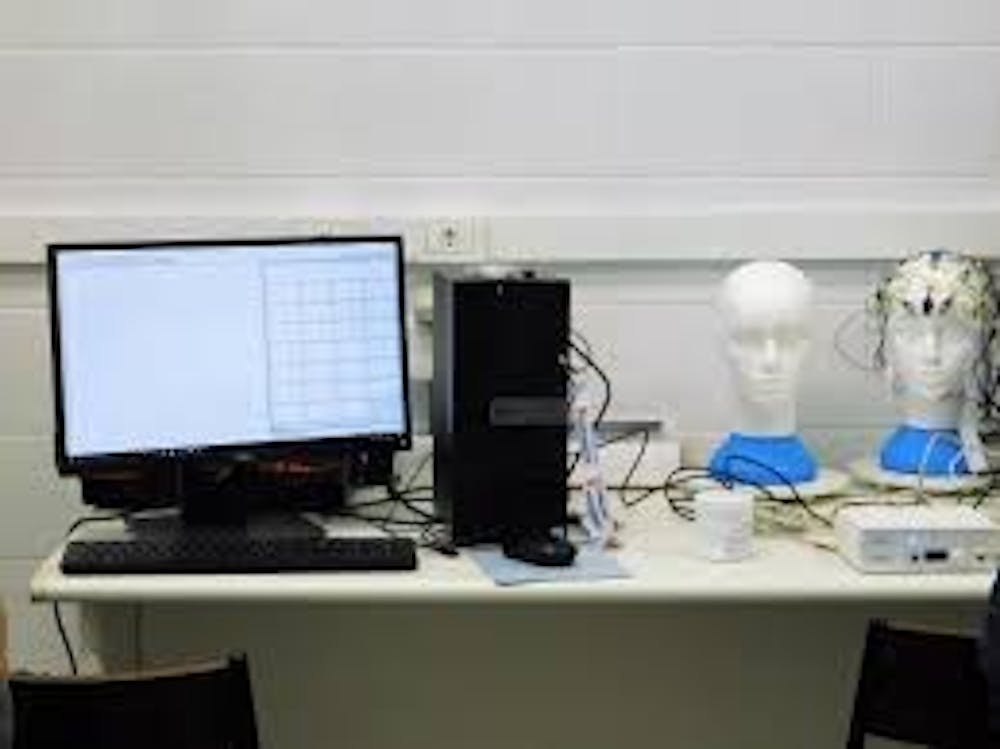Have you been experiencing lower back pain recently? If so, you are not alone. As many as 80 percent of adults experience lower back pain at some point in their lives.
It is a commonly observed job-related disability that can range in intensity from a constant ache to sharp pains. A lower back pain is considered chronic if it continues to persist for 12 weeks or longer.
Chronic lower back pain can originate from various sources such as disease, injury or stress. Though the exact mechanism is not understood, many theories have been developed to try to explain chronic lower back pain.
Past research using electroencephalography (EEG) and magnetoencephalography (MEG) have shown that patients with chronic pain exhibit abnormal neuronal oscillations; in particular, alpha oscillations have been hypothesized to be involved in chronic pain. Pain perception is associated with lower, suppressed alpha oscillations.
Neuronal oscillations are a fundamental mechanism in the brain that promotes synchronization of neuron firing within and across brain regions and allows for the precise temporal coordination underlying processes such as memory or perception. Alpha oscillations are between the frequency range of 7.5 to 12.5 hertz.
In a recent study published in The Journal of Pain, Flavio Frohlich and colleagues from the University of North Carolina examined whether transcranial alternating current stimulation (tACS), a non-invasive brain stimulation technique, can enhance alpha oscillations and thereby relieve the symptoms of chronic lower back pain. They hypothesized that alpha oscillations are impaired in the brain of chronic pain patients and can be modulated with tACS.
During the randomized double-blind trial with two stimulation conditions (bifrontal 10-Hz tACS and sham), two behavioral questionnaires were administered before and after the stimulation at each session to assess pain severity and perceived disability. The Defense and Veterans Pain Rating Scale (DVPRS) comprises a numerical rating pain scale from zero to 10 with detailed verbal descriptions and facial expressions. Additionally, the Oswestry Disability Index (ODI) consists of 10 questions pertaining to perception of disability in daily life.
Results from the study demonstrated that increasing the alpha oscillations reduced pain severity and perceived disability. This suggests that there might be a causal relationship between alpha oscillations and chronic back pain.
Frohlich commented on how their past research had lead up to finding.
“We’ve published numerous brain stimulation papers over several years, and we always learn something important,” he said in a press release.
Frohlich’s vision is that understanding brain network activity will enable the development of novel non-invasive brain stimulation paradigms.
Frohlich went on to talk about their findings.
“But this is the first time we’ve studied chronic pain, and this is the only time all three elements of a study lined up perfectly,” he said. “We successfully targeted a specific brain region, we enhanced or restored that region’s activity, and we correlated that enhancement with a significant decrease in symptoms.”
Besides expanding our understanding of the mechanisms underlying chronic pain, the results from this study suggest that the use of non-invasive brain stimulation could represent a non-pharmacological treatment approach to chronic lower back pain.
Julianna Prim, a graduate student that works closely with Frohlich’s lab, commented on the applications of this study.
“If brain stimulation can help people with chronic pain, it would be a cheap, non-invasive therapy that could reduce the burden of opioids, which we all know can have severe side effects,” Prim said, according to ScienceDaily.
While the study was not designed to detect meaningful clinical significance, the research team is planning to further explore the results by investigating the treatment effects with a larger sample size and more refined strategies.
Prim hopes the lab will expand on their research.
“The exciting thing is that these results occurred after just one session,” Prim said. “We hope to conduct a larger study to discover the effects of multiple tACS sessions over a longer time period.”
Frohlich believes that they are on the right track to finding a new treatment method.
“Ultimately, if we want to develop better treatments, cures, and prevention strategies, then these sorts of new approaches that bring researchers together are of fundamental importance,” Frohlich said.





